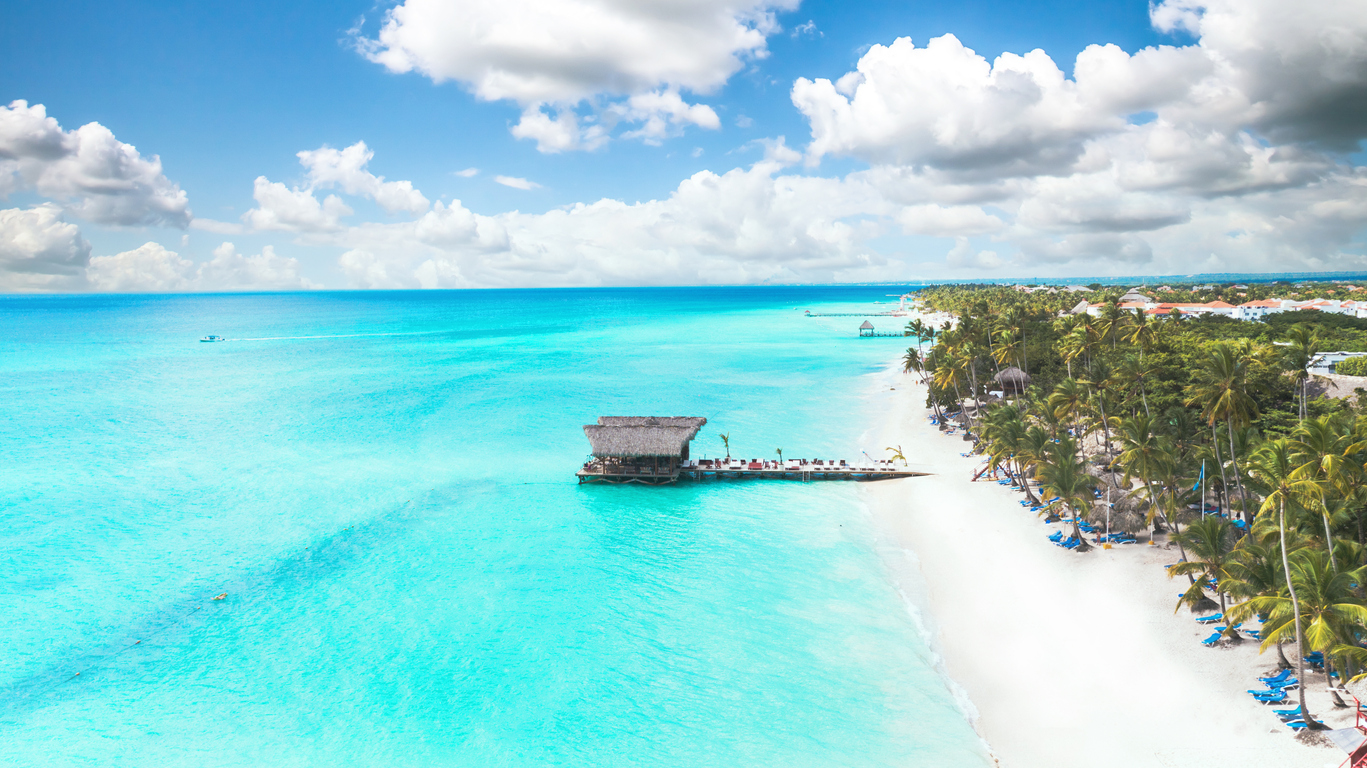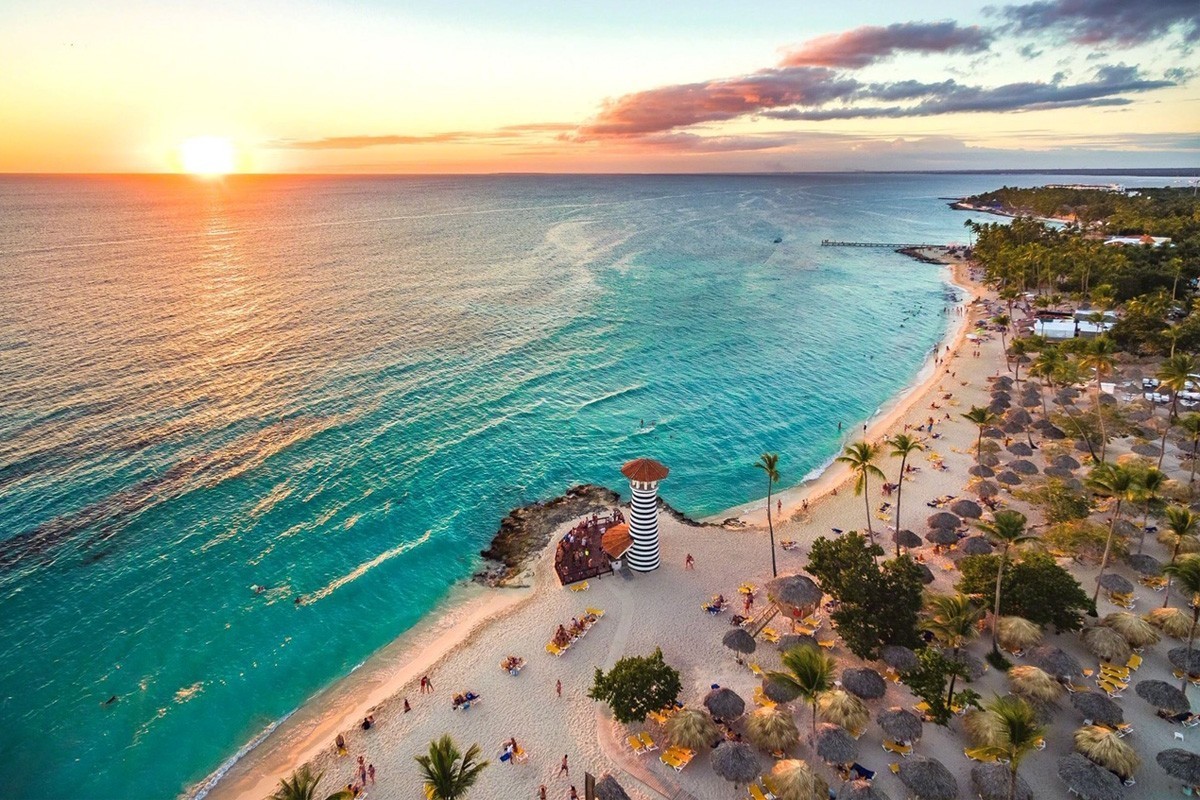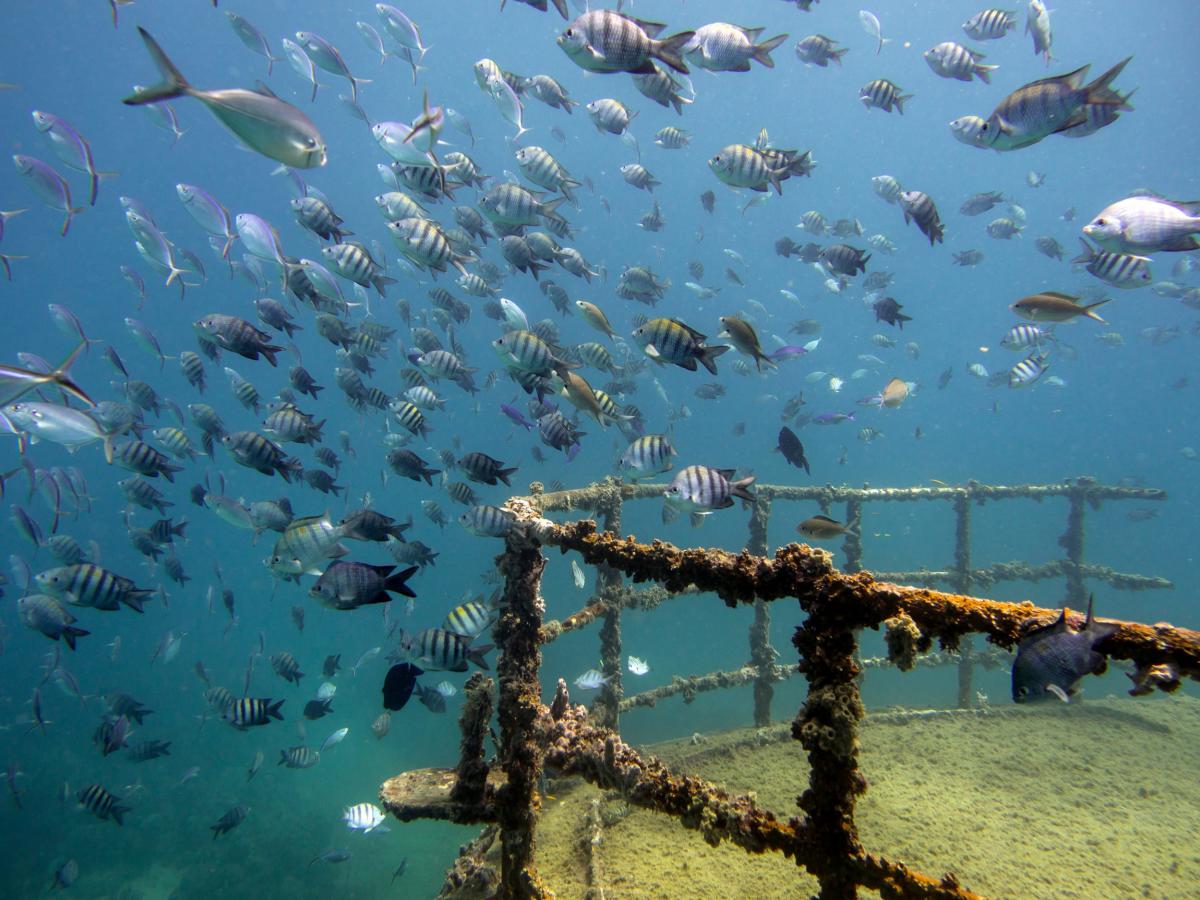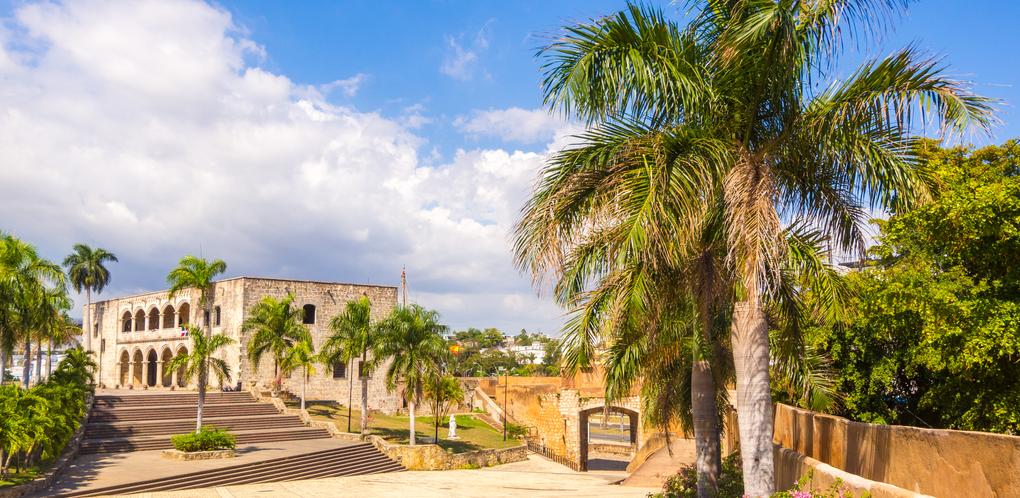Public Beach Playa Dominicus
One of the DR’s longest white sand beaches lines a series of large resorts in the Bayahíbe Dominicus area, but remains open to all visitors. The most popular, frequented section faces the Iberostar Hacienda Dominicus by the landmark black-and-white painted lighthouse-shaped bar. The first beach in the Caribbean to receive Blue Flag certification, Dominicus is popular for swimming in its shallow,

turquoise waters, but also for diving, with an abundant reef right off its shore, and no undertow. Nearby restaurants and a series of arts and crafts shacks on the eastern, public edge of the beach complete the picture.
Dominicus Beach (Playa Dominicus) is one of the cleanest and safest beaches on the island, located near the quiet fishing village of Bayahibe in the southeast of the Dominican Republic on the Caribbean coast. The beach is known as the “hotel zone” in Bayahibe, most of the coastline is owned by hotels, but public free zones along the coast are also available. Dominicus is the first beach on the island, as well as the first in the Caribbean to receive the Blue Flag Award.
 In summer, the beach is crowded, but because of its large territory, you can find a quiet place to retire. Crystal clear water with light turquoise tints, white sand and shady palm trees along the beach create an incredible fabulous landscape. The calm sea and the absence of underwater currents are great for swimming. Dominicus is one of the favorite places for beginner divers, near the beach there is a beautiful coral reef.
In summer, the beach is crowded, but because of its large territory, you can find a quiet place to retire. Crystal clear water with light turquoise tints, white sand and shady palm trees along the beach create an incredible fabulous landscape. The calm sea and the absence of underwater currents are great for swimming. Dominicus is one of the favorite places for beginner divers, near the beach there is a beautiful coral reef.
In addition, Dominicus is located within the Eastern National Park, which is very close to the ecological and archaeological Trail of Padre Nuestro, so every vacationer has a unique chance to do nowadays popular ecotourism. The beach is also known for its „shopping mile”, which is represented by numerous colorful souvenir stores.
In summer, tropical rains and typhoons – are frequent guests in the Dominican Republic. Therefore, it is better to go there in winter, from November to March, when the air warms up to a comfortable 24-30 degrees, and the weather is dried up.
Cueva del Puente
One of the most accessible caves, located inside the Cotubanamá National Park—there are over 400 of them— Cueva del Puente reveals a three-level chamber with stalactites, stalagmites, pictographs from the Taino days, and numerous bats. The cave trail is located approximately three kilometers south from the entrance of the park, and it takes less than 30 minutes to reach it, hiking past a tropical rainforest inhabited with lizards and birds. The giant caverns are partly obscure, while certain sections have orifices and light flows in from the sky.

Cueva del Chicho
Cueva del Chicho
Cueva del Chicho is one of the most outstanding underground caves, tucked inside Cotubanamá National Park. Its aquamarine, sparkling fresh waters draw many hikers, but it also holds numerous petroglyphs—proof of the Taino’s presence in these parts. You can dip in its fresh water, azure blue waters that resemble a lake, or if you’re a certified cave diver, venture deeper on a one-tank dive with a licensed operator from Bayahíbe or La Romana.

Atlantic Princess Shipwreck
Atlantic Princess Shipwreck
The Atlantic Princess was a small cruise ship used by tourists of the area. In 2008, it ran aground on the beach during Tropical Storm Fay. The plan was to sink the ship, and create a beautiful underwater environment and artificial reef for visitors to enjoy. But the Atlantic Princess actually sunk on its own on May 6, 2009, and rests at just 12 meters (40 feet) below the surface. To this day, it remains a great dive spot for all, beginners to experts, thanks to its abundant marine life at shallow depths.

Santa Domingo
Santa Domingo
Santo Domingo de Guzmán, or just Santo Domingo, is the capital of the Dominican Republic and is its largest city. It is the oldest European city in the Americas where people have been living since it was founded at the end of the 15th century.
Places of interest Zona Colonial
Catedral Santa María, first cathedral in the Americas.
The old section of the city is known as Zona Colonial („Colonial Zone”) or Ciudad Colonial(„Colonial City”). The Colonial Zone, bordered by the Ozama River, was declared a World Heritage Site by UNESCO in 1990. Some of the old buildings in this zone are
- Cathedral of Saint Mary, the first cathedralin America.
- Alcázar de Colón („Diego Columbus’ Palace”) where Diego Columbus, son of Christopher, lived when he was governorof the Spanish colony.
- Monasterio de San Francisco („St. Francis Monastery”), an church and place where monks lived (monastery); now is partially destroyed.
- Hospital de San Nicolás de Bari („St. Nicholas of Bari Hospital”), the first hospital in the Americas; now is partially destroyed.
- Palacio del Gobernador y de la Audiencia („Palace of the Governor and the Court”); now is a museum, Museo de las Casas Reales („Museum of the Royal Houses”).
- Fortaleza Ozama („Ozama Fortress”), the oldest fortin America.
Museums
Santo Domingo has several museums, many of them in the Zona Colonial.

- Naval Museum of the Atarazanas
- Museum of the Casas Reales (colonial period)
- Museum of Duarte
- National Museum of Natural History
- Museum of the Dominican Man
- World of Amber Museum
- Modern Art Gallery
- National Museum of History and Geography
Parks and recreational areas
Santo Domingo has various parks as the National Botanical Garden, the National Zoo and the Mirador Sur Park.
There are also many small squares as the Parque Colón („Columbus Park”), in the Zonal Colonial and on the northern side of the cathedral; and the Parque Independencia („Independence Park”), just outside of the old western wall and where the Founding Fathers of the country (Juan Pablo Duarte, Francisco del Rosario Sánchezand Matías Ramón Mella) are buried.
